Is the new Genesis G90 a contender for the world’s best luxury car?
The Korean carmaker pulls out all the stops for its flagship Genesis G90 saloon, with an extended-wheelbase model providing the ultimate in rear seat comfort
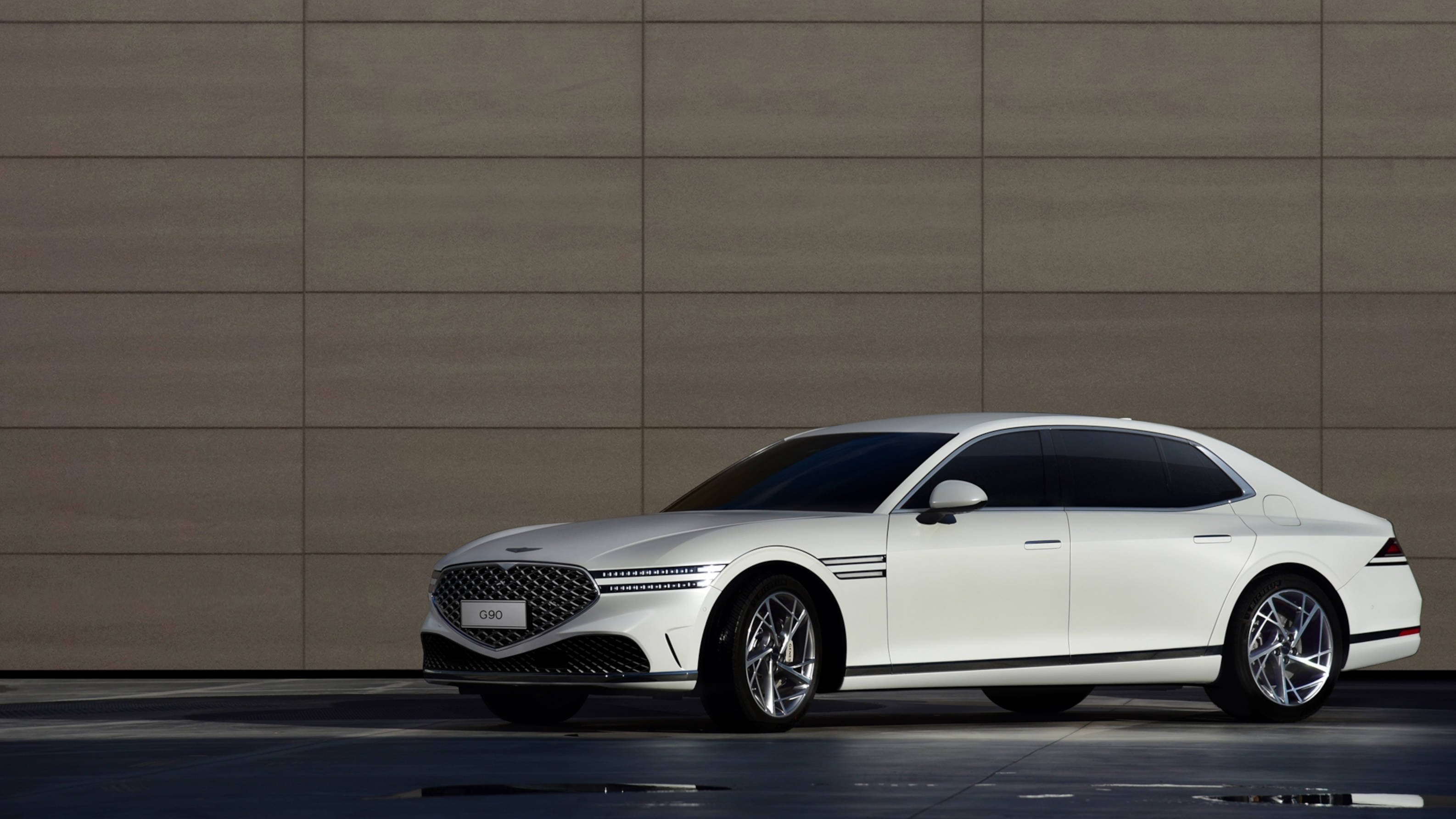
First things first. Although this new Genesis G90 is coming to Europe, it will actually only be sold in Germany and Switzerland, and even then it will only be made to order. This feels like a rather limited roll-out for a car the Korean company is keen to call its flagship, and ‘the epitome of elegance’. The G90 was launched in Korea in July 2023, and we experienced its broad range of abilities in Faro, Portugal, in that delightful post-peak window of blue skies and empty roads.
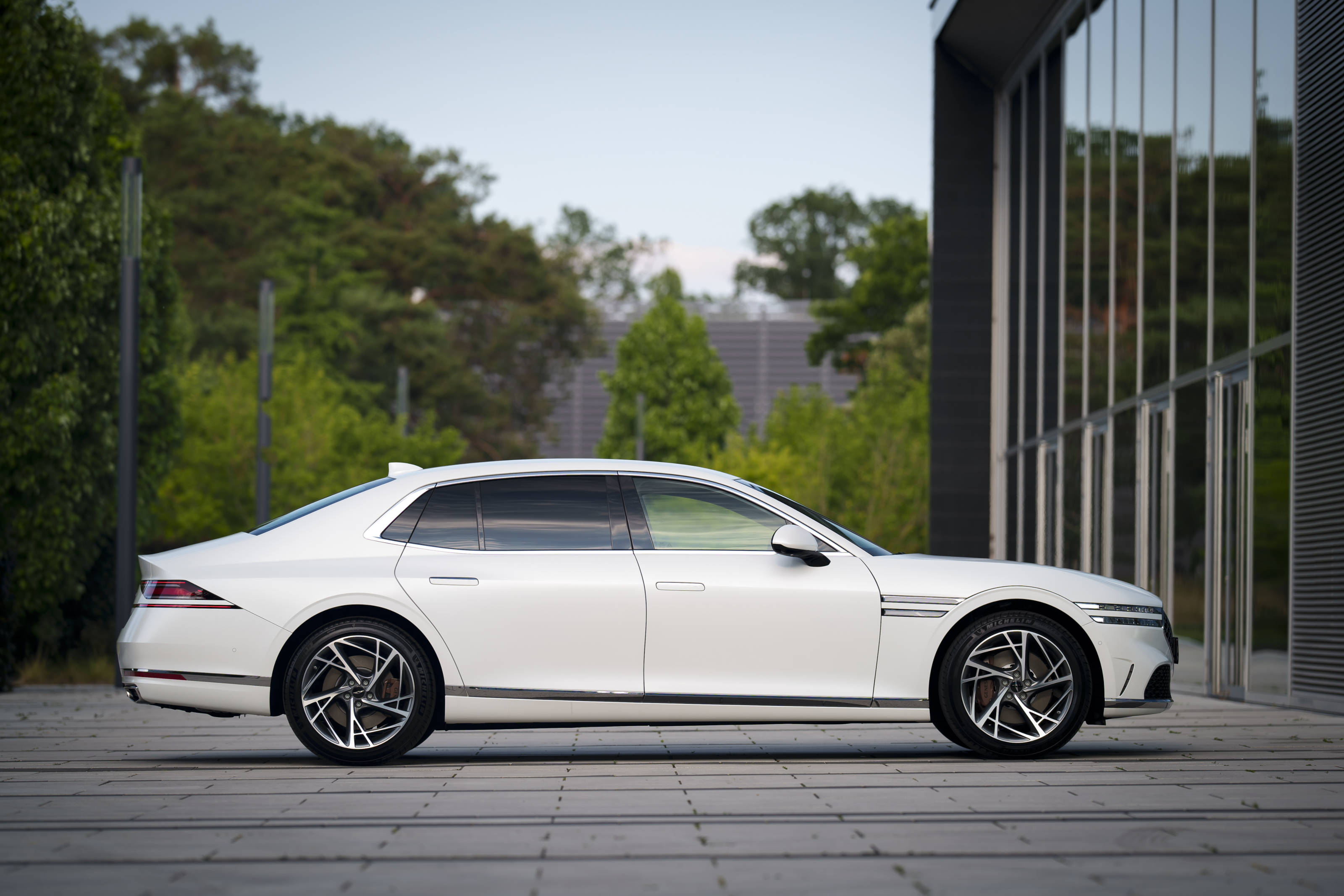
Since the company was created in 2015, Genesis has launched eight new models, a mix of traditional saloons and SUVs and an innovative EV. Hived off from parent company Hyundai, the new brand’s identity and form language has been overseen by former VW Group design supremo Luc Donckerwolke. The line-up includes the conventional-looking G70 and its SUV sibling, the GV70, the fastback G80 and the excellent GV60, currently the only ground-up EV design in the company’s fleet.
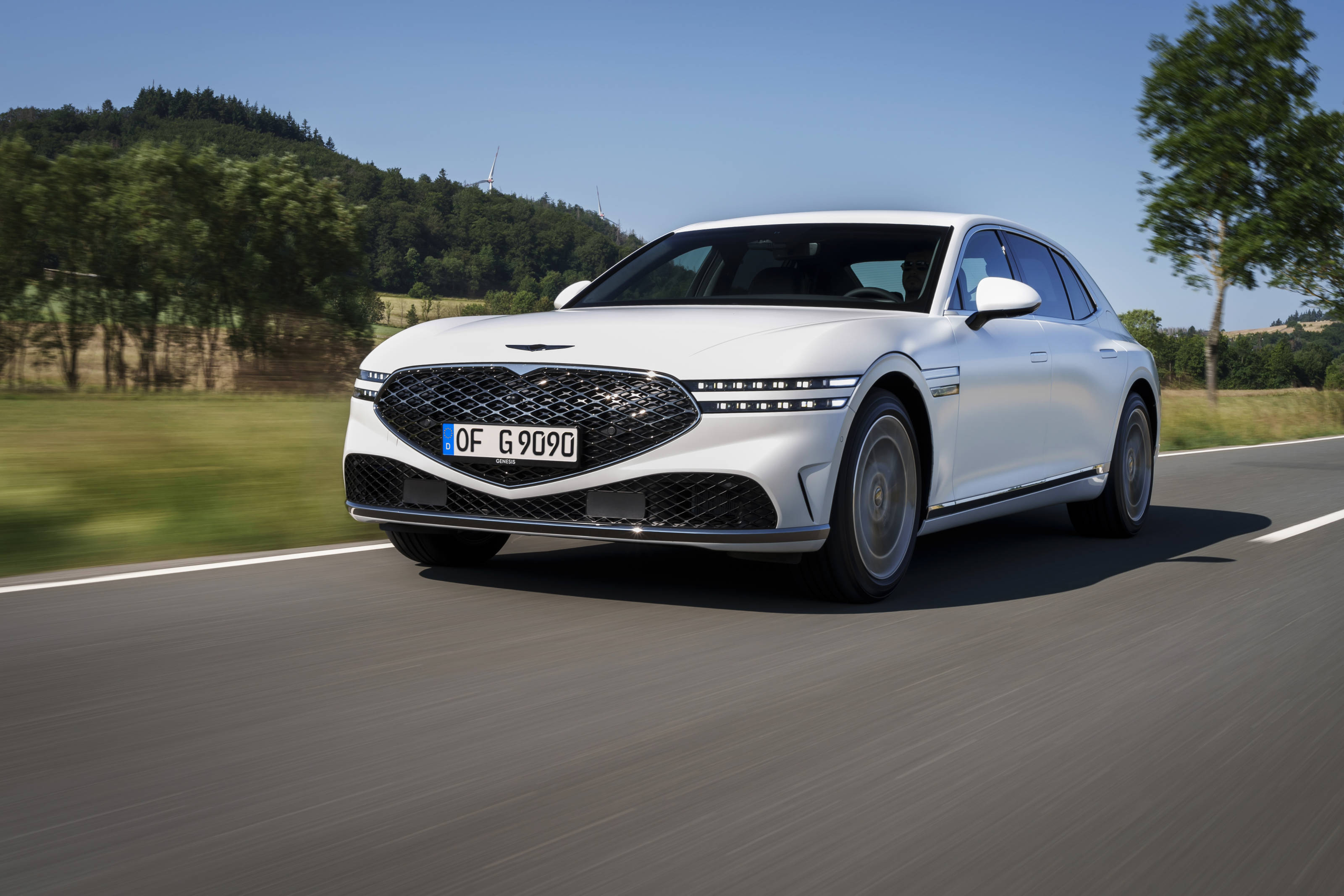
The Genesis G90 attempts to trump them all, with an imperious scale and specification that is akin to a premium hotel on wheels. In this respect, the G90 is not just a Korean crack at the ‘F’ Segment, the upper echelon car class than includes the Mercedes S-Class, BMW 7-Series, Audi A8, et al, but an attempt to go the whole distance and compete with the likes of Mercedes-Maybach, Bentley’s Flying Spur and the Rolls-Royce Ghost.
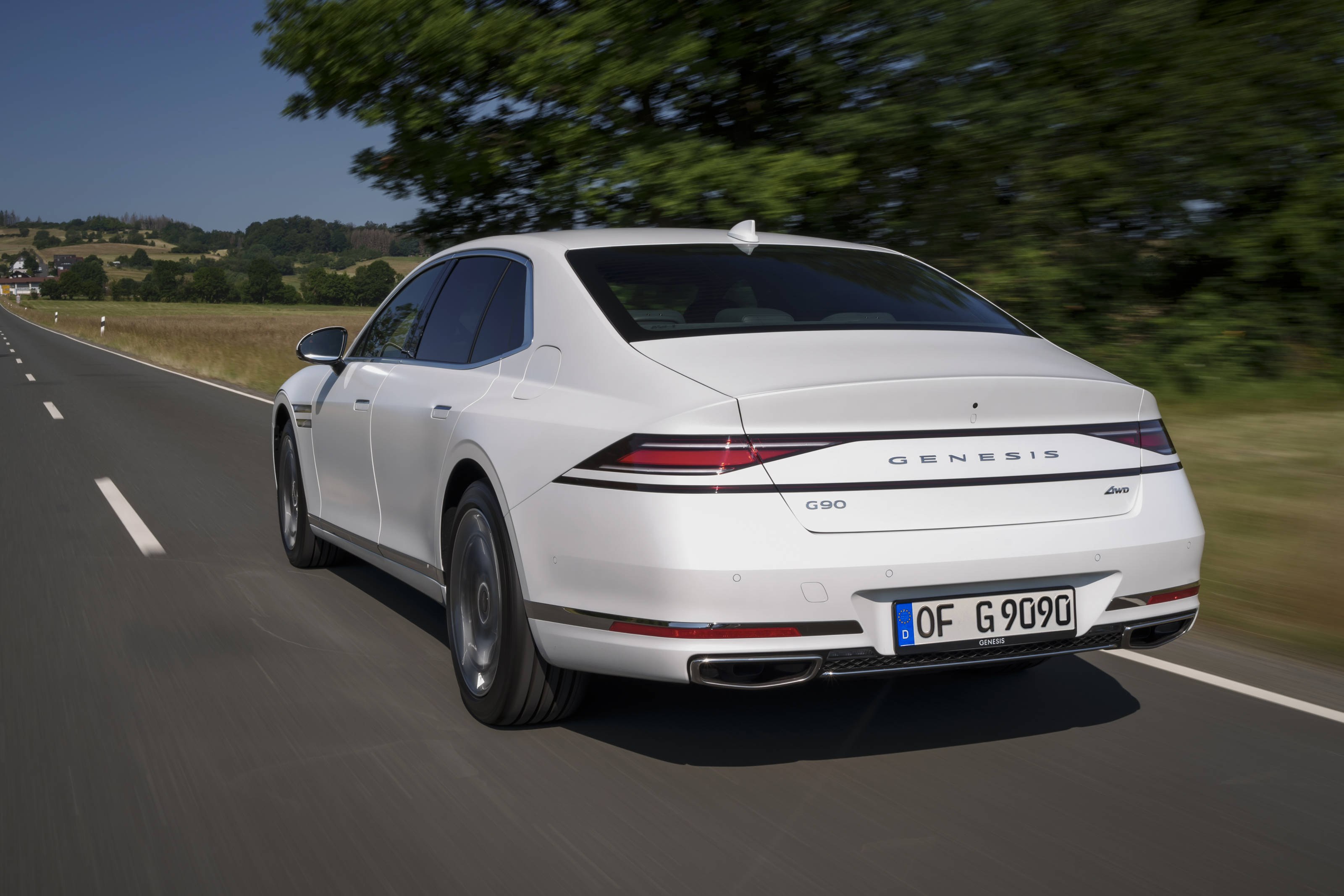
Like all flagships, it’s a little bit conservative. Available in short-wheelbase and long-wheelbase models, Genesis has taken the unusual step of making each quite visually distinct, with the LWB’s rear half restyled to better accommodate the proportional shifts and extra 190mm needed to really stretch out those back seats.
The big-winged Genesis grille and trademark twin horizontal headlights are more prominent than ever before, and clever design has minimised the number of panels needed to shape the long, long body. The G90 is not a very modern-looking car, with a tapered shoulder line and rear deck that evokes oversized Americana of the late 1970s and early 1980s, but it has undeniable presence.
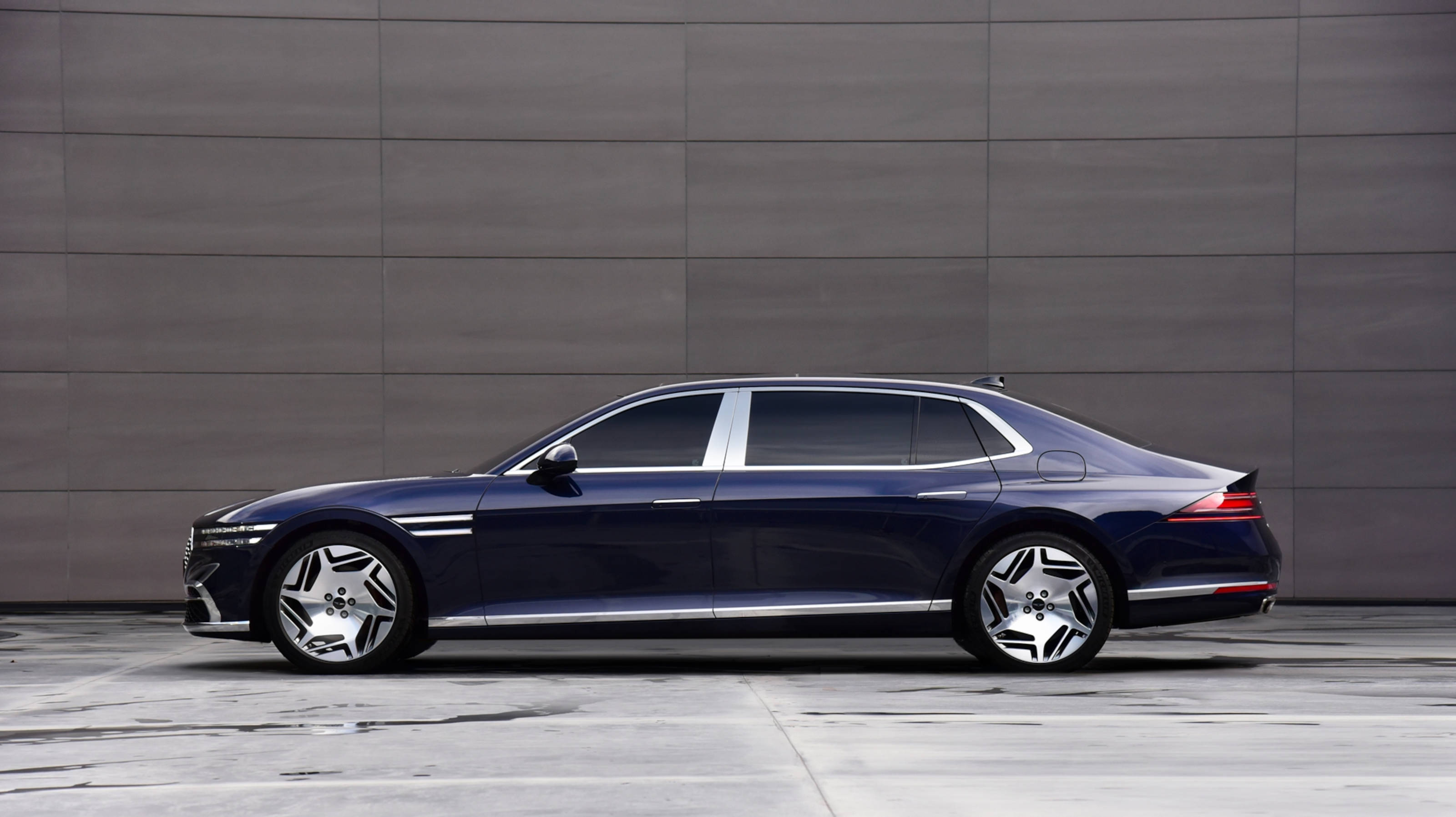
The long wheelbase Genesis G90
While the driver is not exactly neglected (more on that later), back here is where the G90’s talents are focused. Taking inspiration from the Korean concept of ‘son-nim’, or hospitality, this is a space for CEOs to kick off their Louboutins or Church's and relax. Or, as is more likely, set about preparing themselves for the next round of takeover talks.
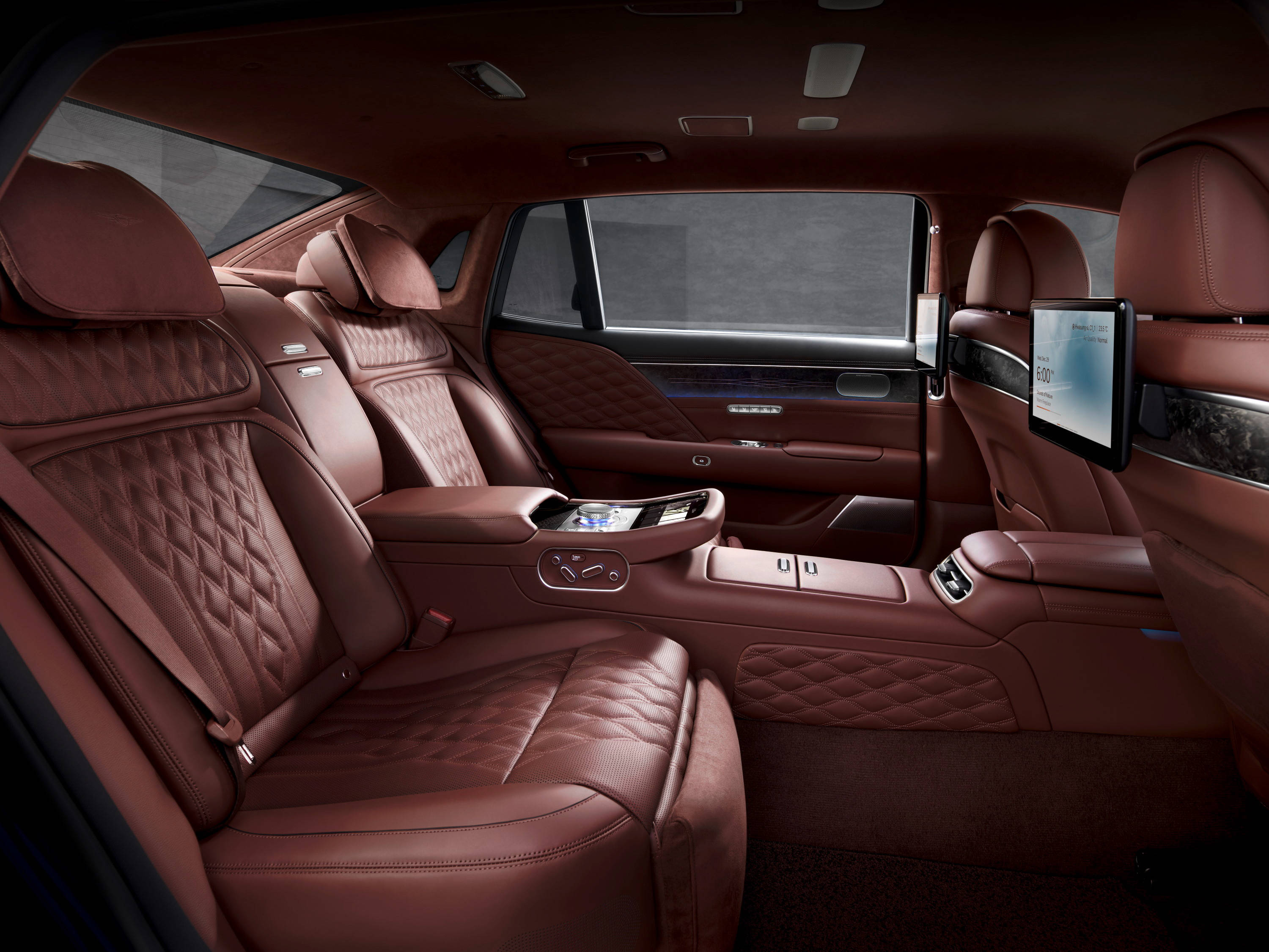
To achieve all this, the G90 gives the driver a set of chauffeur-specific options, allowing for gentle acceleration and braking and an all-round pillow-soft ride that won’t spill the drinks. There’s effortless power on tap, albeit not nearly as much as some of its sportier rivals, and rather surprisingly all this comes courtesy of a conventional V6, without even a hybrid system in sight. As an electric G90 is probably a few years away, is this new contender still in the game despite the lack of zero emission ability?
Receive our daily digest of inspiration, escapism and design stories from around the world direct to your inbox.

We’d venture to say that the bill payer in the back seats won’t notice or care. There’s active noise-cancelling back here, massage seats, a fragrance system and even a ‘Mood Curator’ that sets the lighting, scent and music according to a bunch of pre-defined wellness-inducing scenarios. It’s intended to evoke the calming fug of a luxury hotel or a spa, a meticulously curated bubble of ambiance that comes with a certain level of wealth.
Genesis G90, a place to live, work and relax
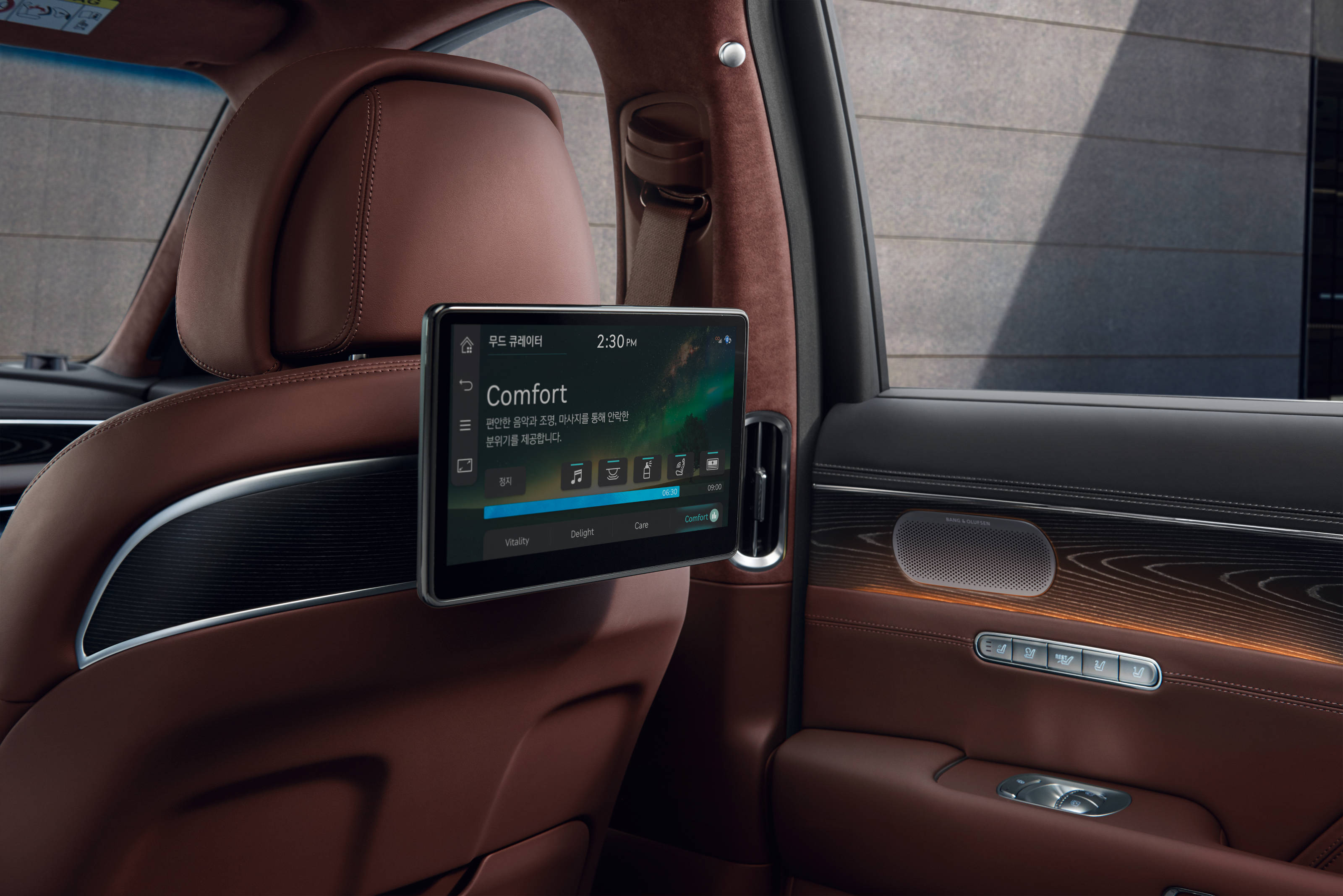
Helping this along is a 23-speaker Bang & Olufsen audio system, with the little tweeters that rise up theatrically from the dashboard. As well as two hefty sub-woofers that are even speakers set in the roof, all part of creating what the company calls ‘Virtual Venues’, a digital recreation of the sound stage and acoustics of key concert venues around the world, including the Boston Symphony Hall.
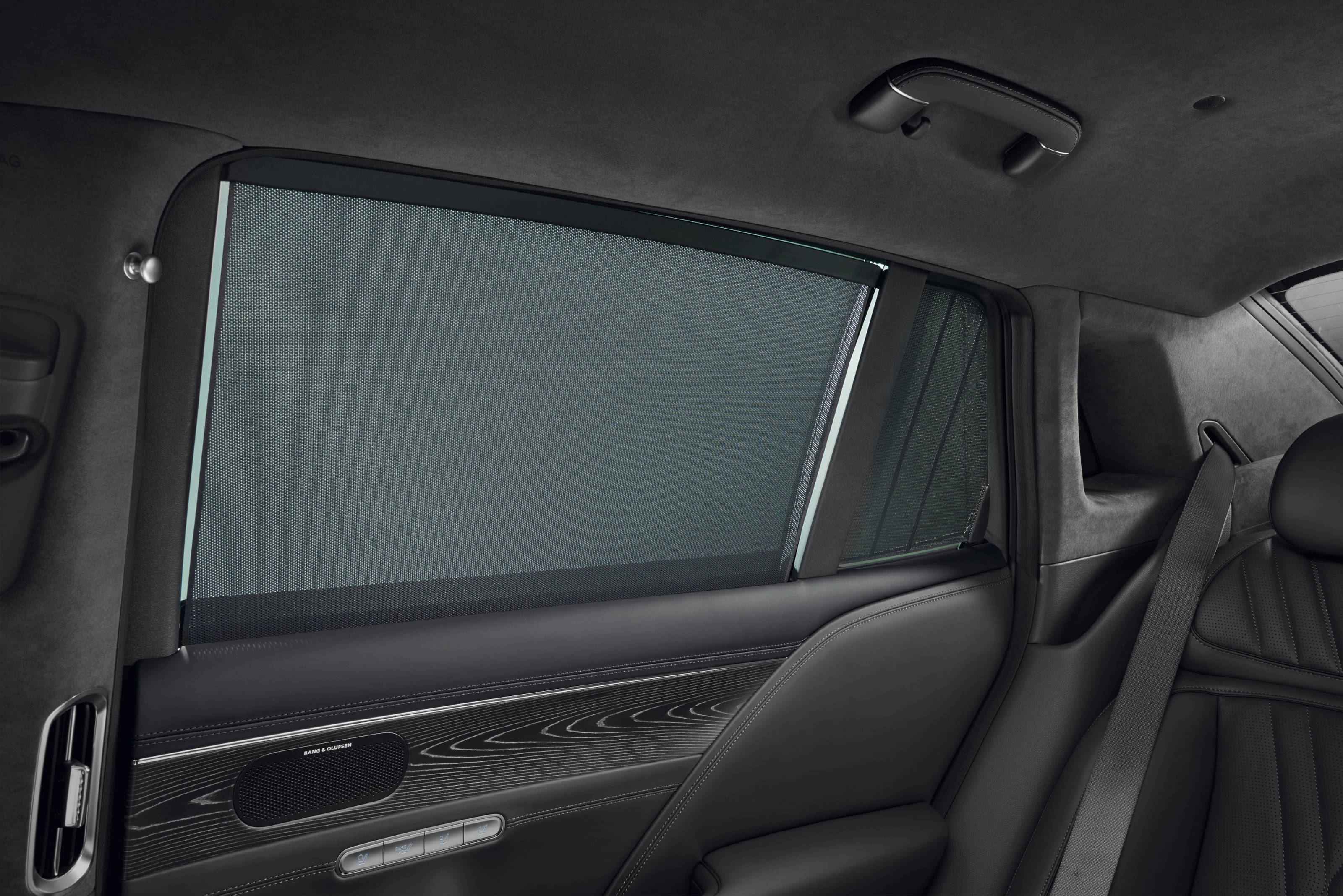
Other nice touches include a wood grain effect trim that’s actually made from recycled newspapers. It doesn’t sound as upmarket as it feels, and if you look closely, you can even see traces of Hangul characters in the ‘grain’. The reclining seats really recline all the way back, with a footrest that descends from the front passenger seat for the ultimate in-car bed.
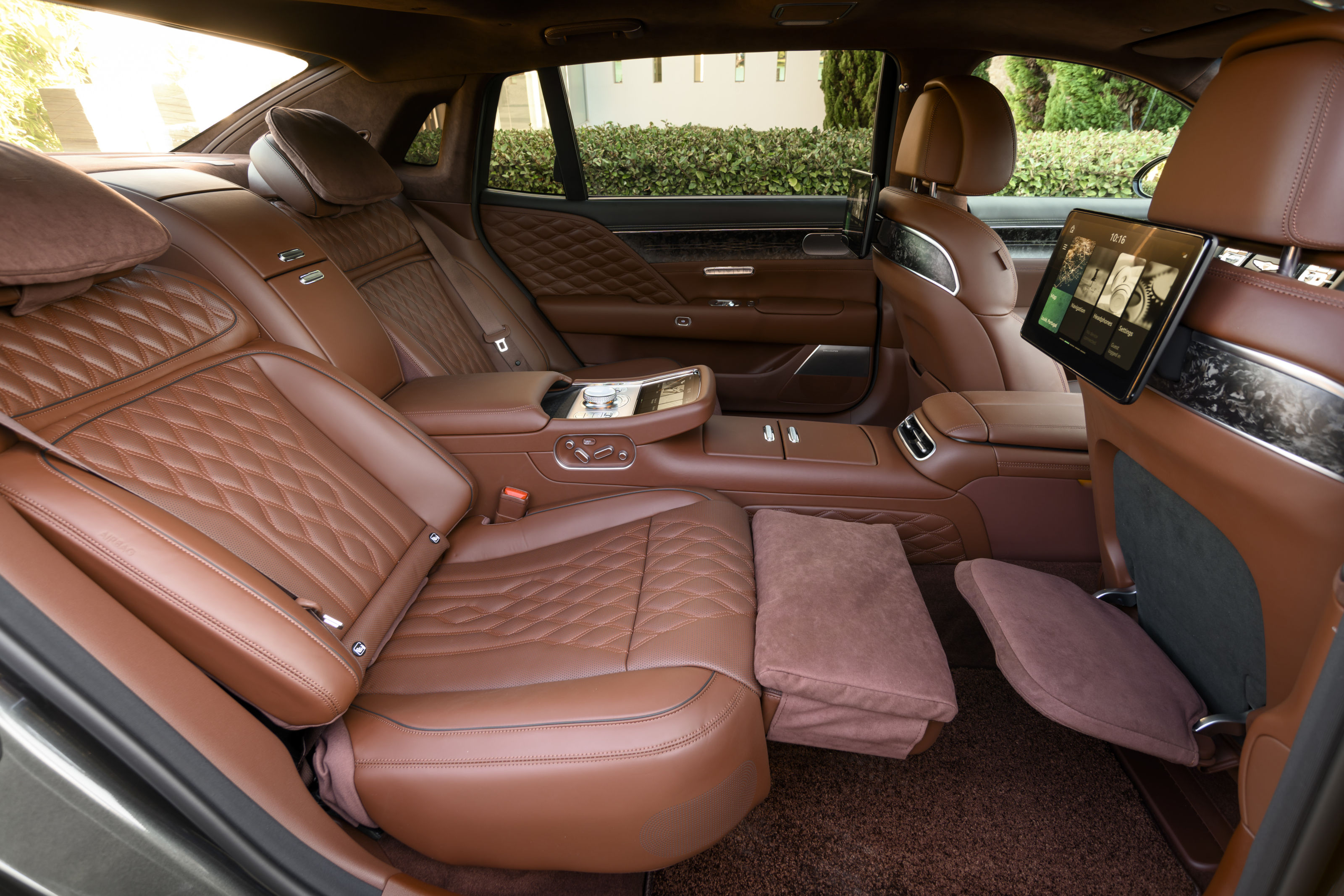
Up front, the cockpit successfully blends buttons and screens and there are (welcome) traces of Hyundai’s excellent HMI everywhere, albeit with a more premium feel. Most of the time, the driver will be focused on keeping things calm for their passengers, but should circumstances and conditions allow, the G90 is a strong performer.
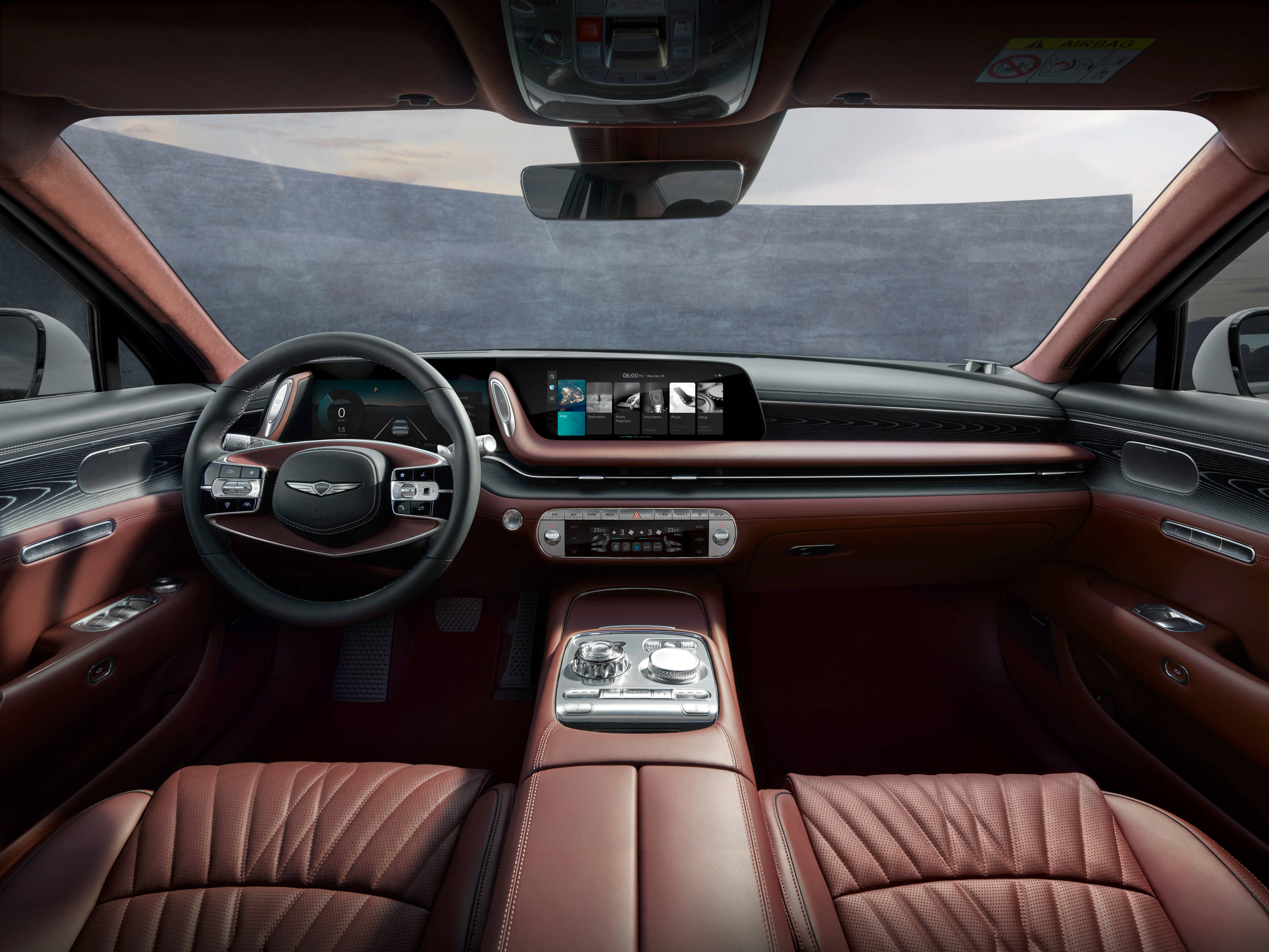
Driving a vast, modern premium luxury car tends to be a battle between physics and technology. Any engineering and dynamics wizardry is lost beneath a swathe of over-eager assistance systems, ready to tweak the wheel and pump the brakes when you're (usually) least expecting it, leaving you unsure as to what the car's raw, untreated response would actually be. ADAS – Automatic Driver Assistance Systems – are not just commonplace on modern cars but legally mandated. Without a clutch of the key systems, a car can't receive the full five-star safety rating.
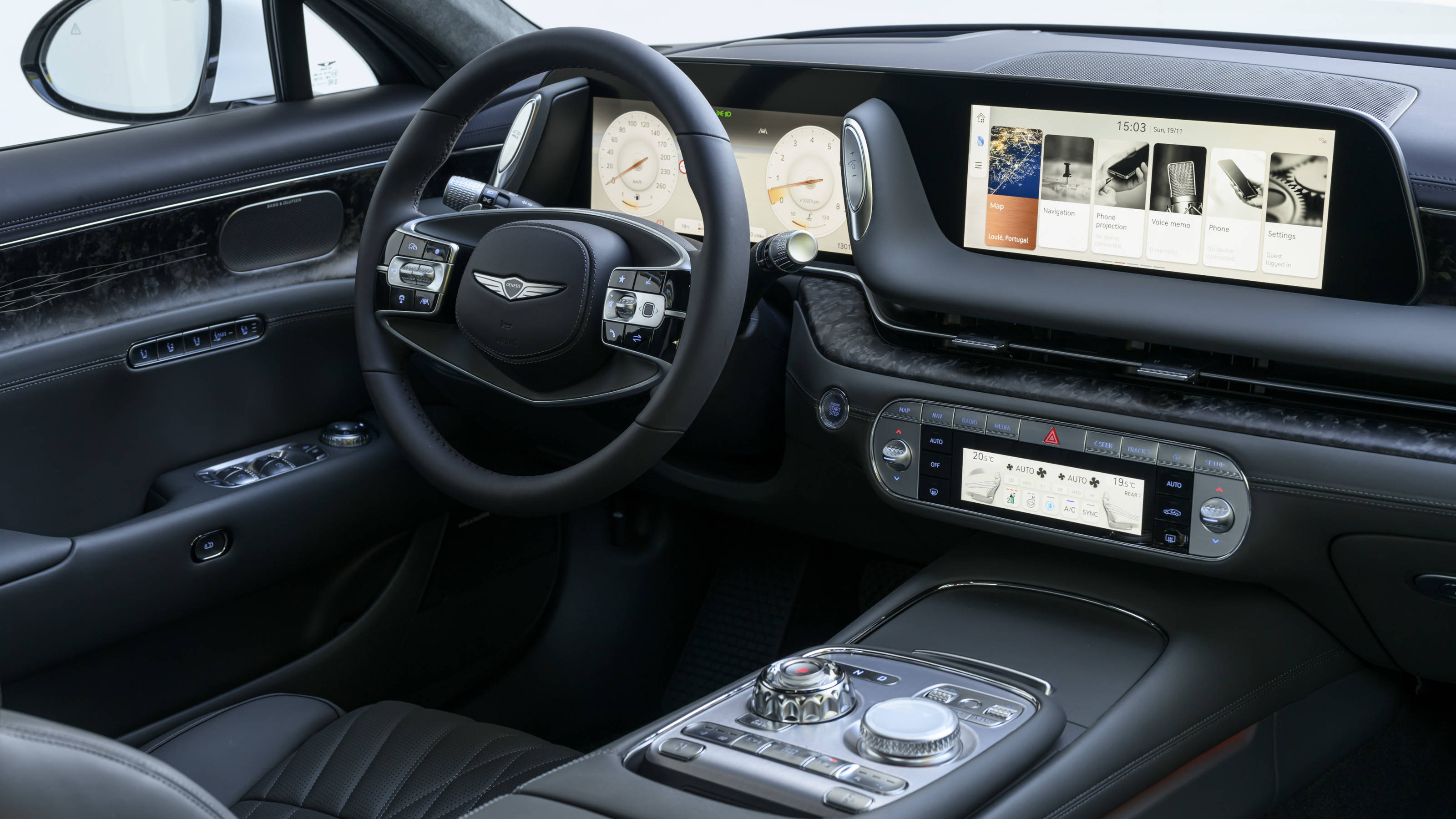
Happily, all these intrusions can be switched off, even if the fine print requires this act of potentially lethal Luddism to be buried deep in the settings menus, not activated by a simple button push. It's only when everything is disengaged that one can truly get a sense of how a car like the G90 actually handles. Rear-wheel steering helps shrink the feel of the LWB’s massive 5.4m length, and although it’s arguably too big for genteel European roads and sharp corners, you can still hustle the G90 along at indecent speeds.
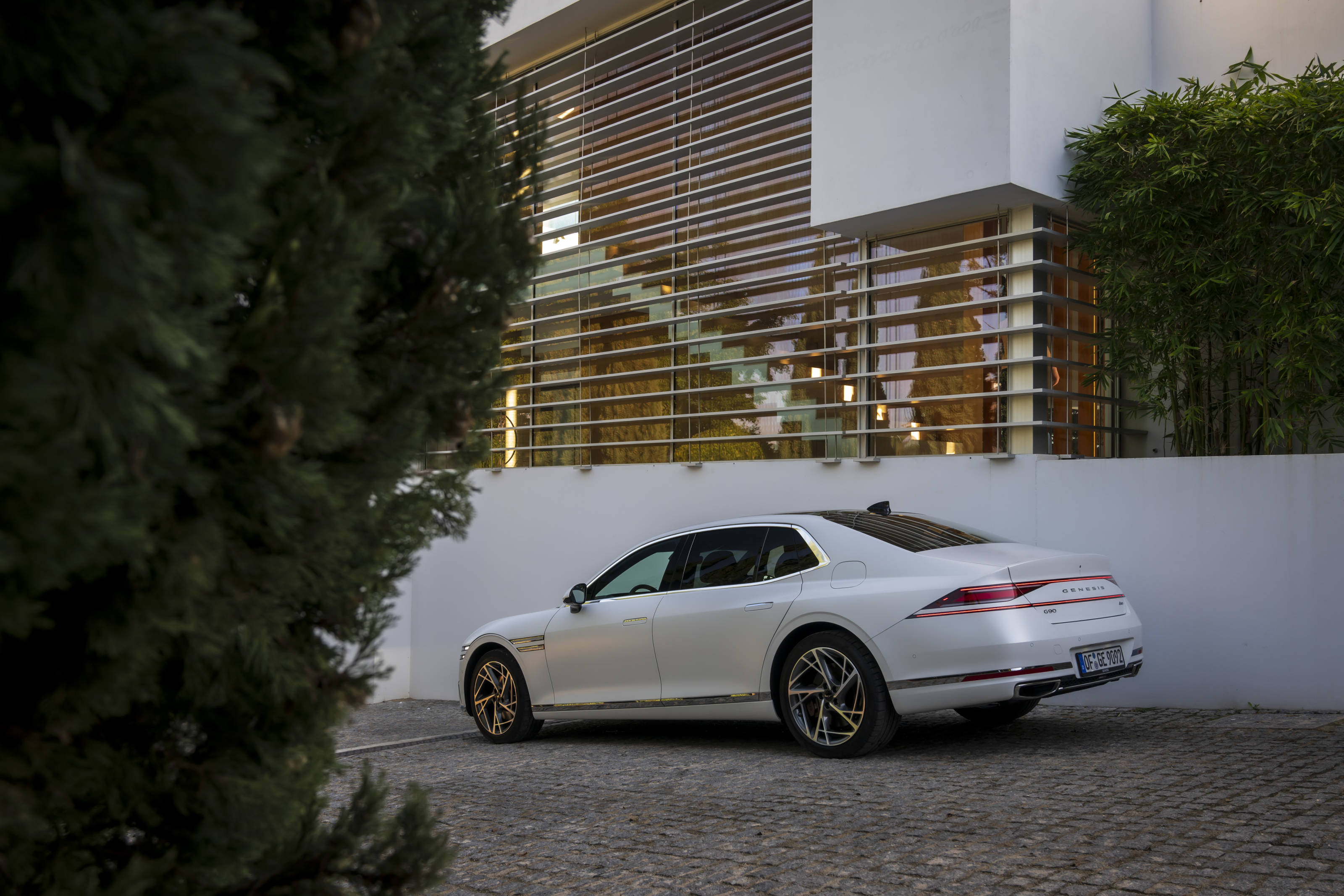
But all that feels very much against the character of this car, which should be considered as a space to live, work and relax just as much as it is a mode of transport. The innovation here might be slight, but the execution can’t be faulted.
Genesis G90, from €116,180, currently available to order on request. Register your interest at Genesis.com
Jonathan Bell has written for Wallpaper* magazine since 1999, covering everything from architecture and transport design to books, tech and graphic design. He is now the magazine’s Transport and Technology Editor. Jonathan has written and edited 15 books, including Concept Car Design, 21st Century House, and The New Modern House. He is also the host of Wallpaper’s first podcast.
-
 The most comprehensive showing of Nan Goldin’s photographs and films is intense and emotional
The most comprehensive showing of Nan Goldin’s photographs and films is intense and emotionalNan Goldin's moving-image work makes a heavy impact in ‘This Will Not End Well’ at Milan’s Pirelli HangarBicocca
-
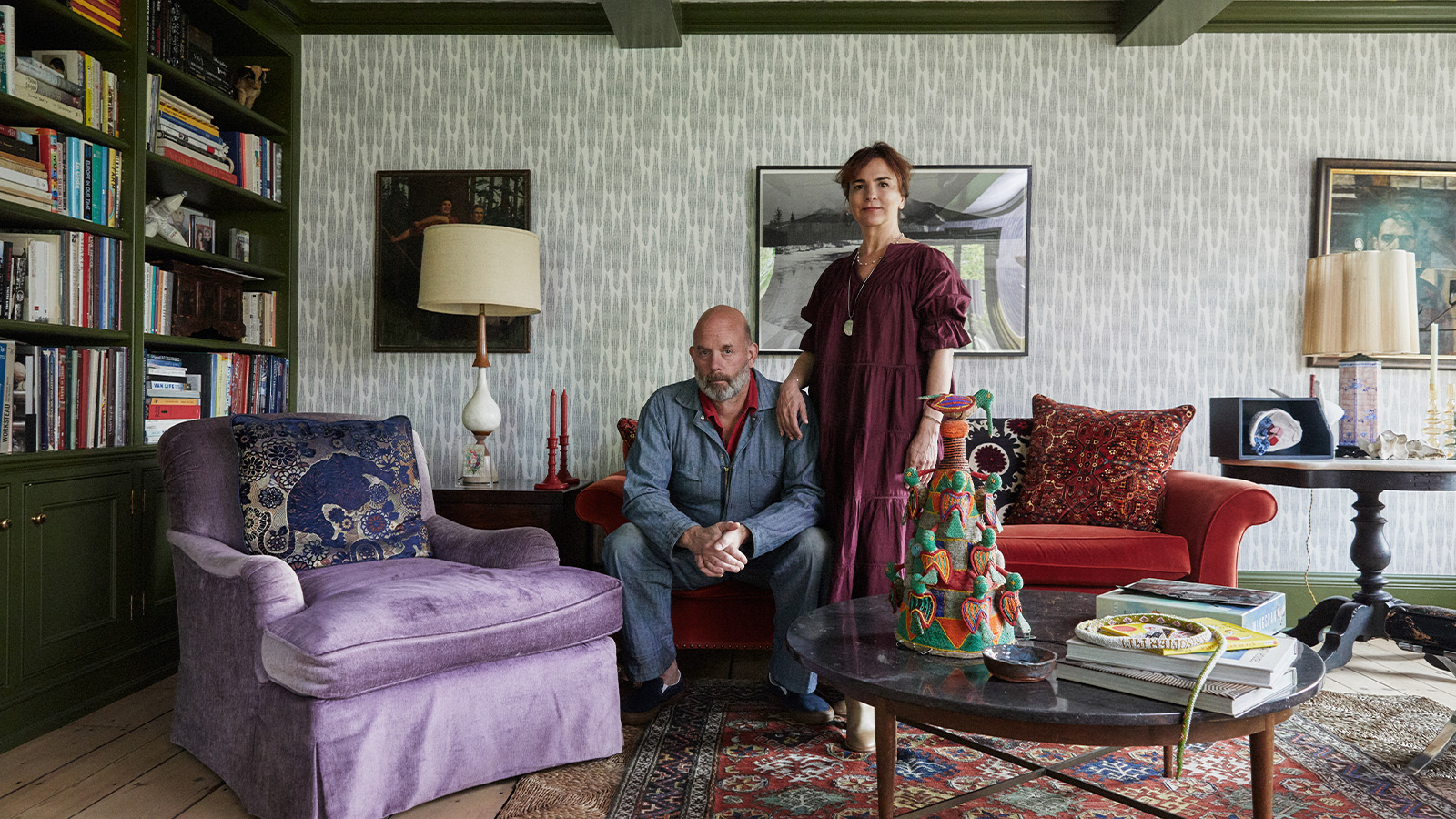 How We Host: Interior designer Heide Hendricks shows us how to throw the ultimate farmhouse fête
How We Host: Interior designer Heide Hendricks shows us how to throw the ultimate farmhouse fêteThe designer, one half of the American design firm Hendricks Churchill, delves into the art of entertaining – from pasta to playlists
-
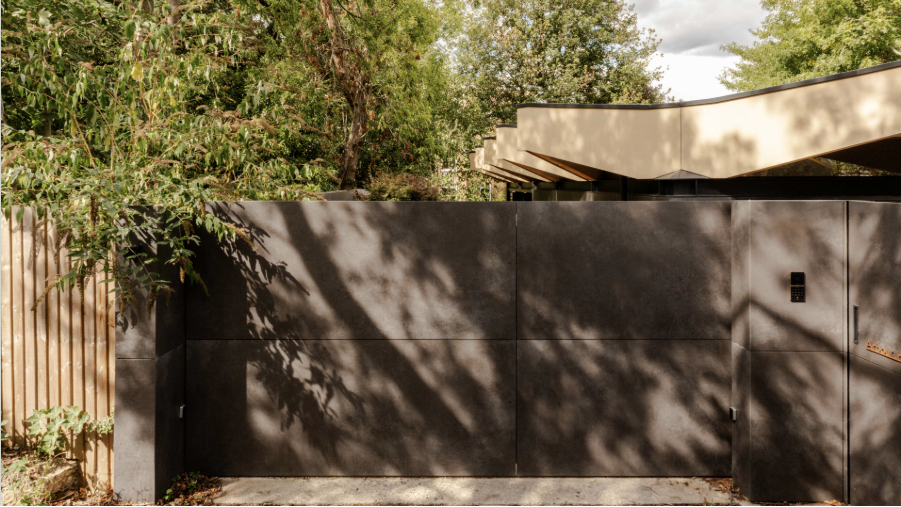 Arbour House is a north London home that lies low but punches high
Arbour House is a north London home that lies low but punches highArbour House by Andrei Saltykov is a low-lying Crouch End home with a striking roof structure that sets it apart
-
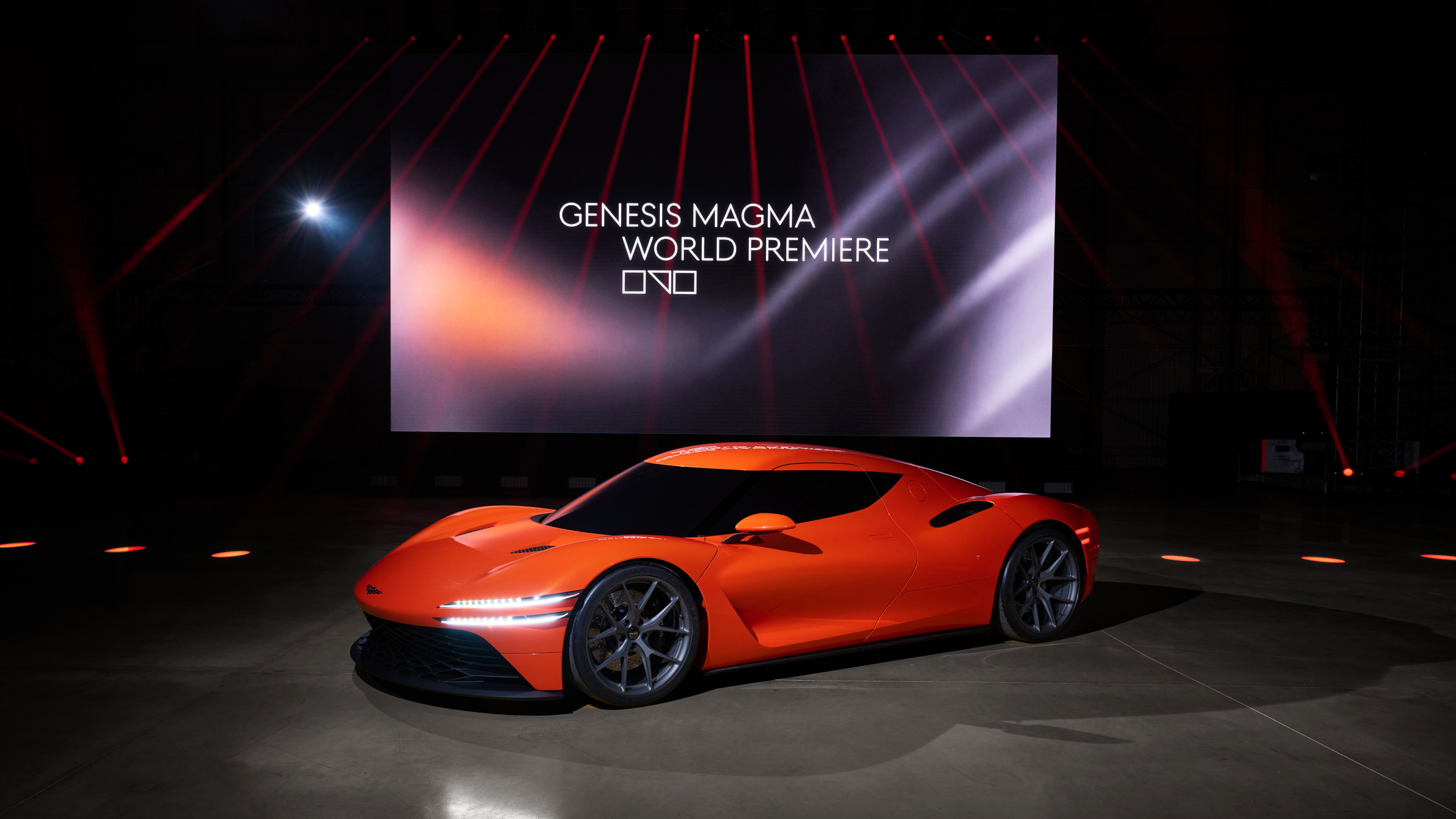 Genesis turns up the heat with its new Magma performance sub-brand
Genesis turns up the heat with its new Magma performance sub-brandGenesis has revealed the hot new GV60 Magma and striking Magma GT Concept in its quest to own luxury performance
-
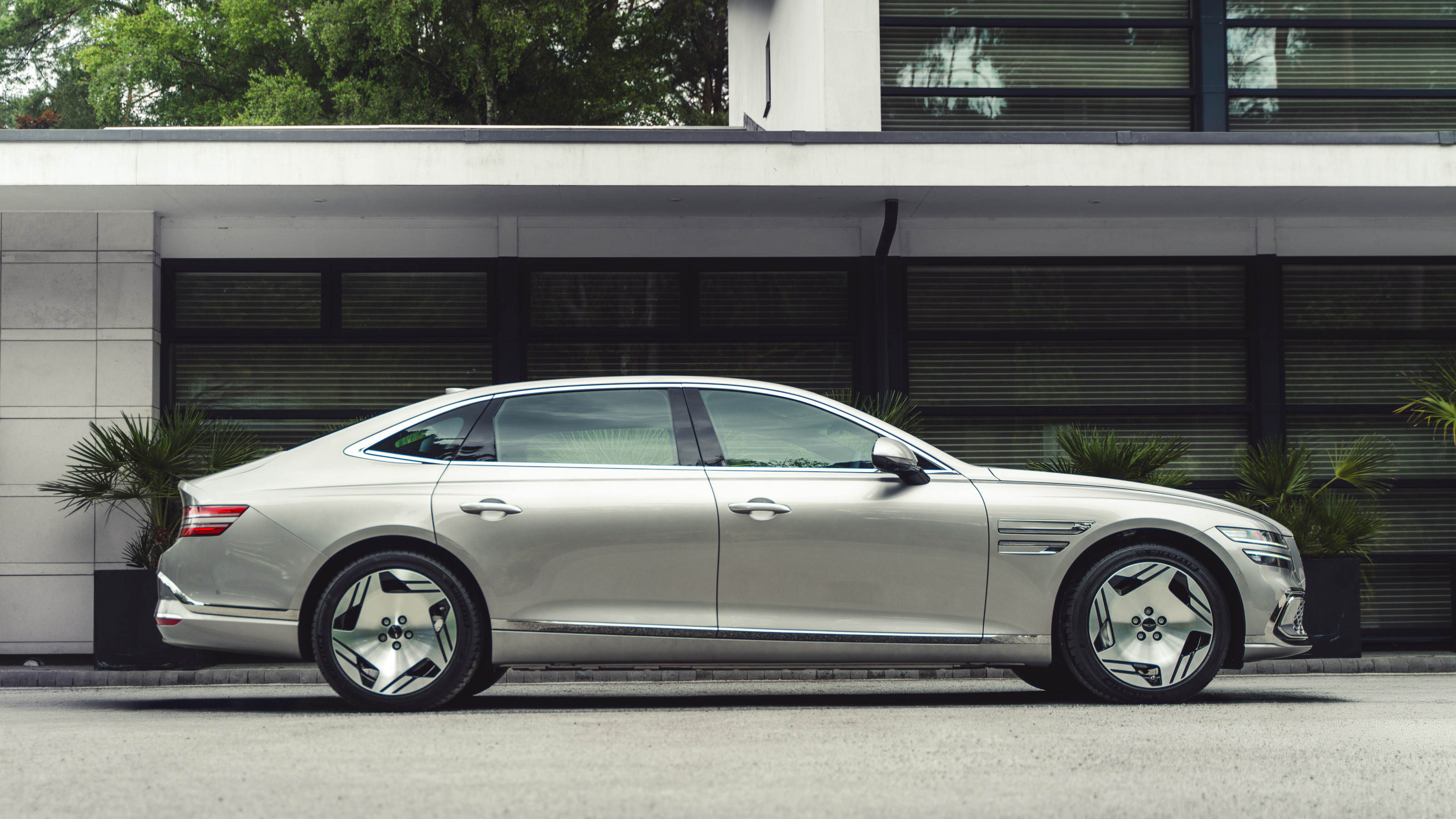 Genesis adds electrification to the G80 and favours long-limbed, chauffeur-loving owners
Genesis adds electrification to the G80 and favours long-limbed, chauffeur-loving ownersThe Electrified G80 is Genesis’s flagship model, a refined EV saloon that brings Bentley-level refinement without costing the earth
-
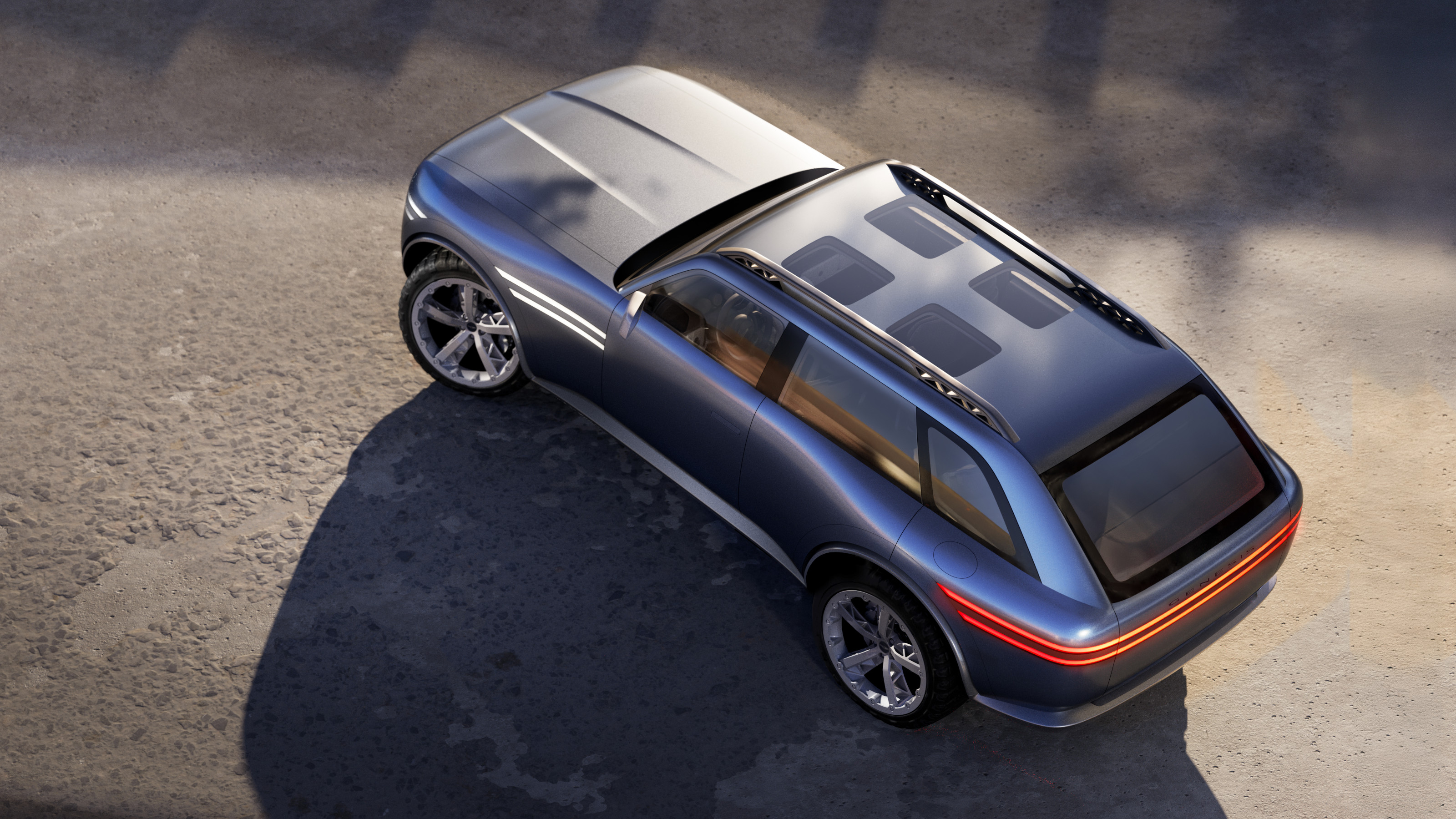 Our pick of the reveals at the 2025 New York Auto Show, from concept SUVs to new EVs
Our pick of the reveals at the 2025 New York Auto Show, from concept SUVs to new EVsInterest in overseas brands remained strong at this year’s NY Auto Show despite the threat of tariffs designed to boost American-owned brands
-
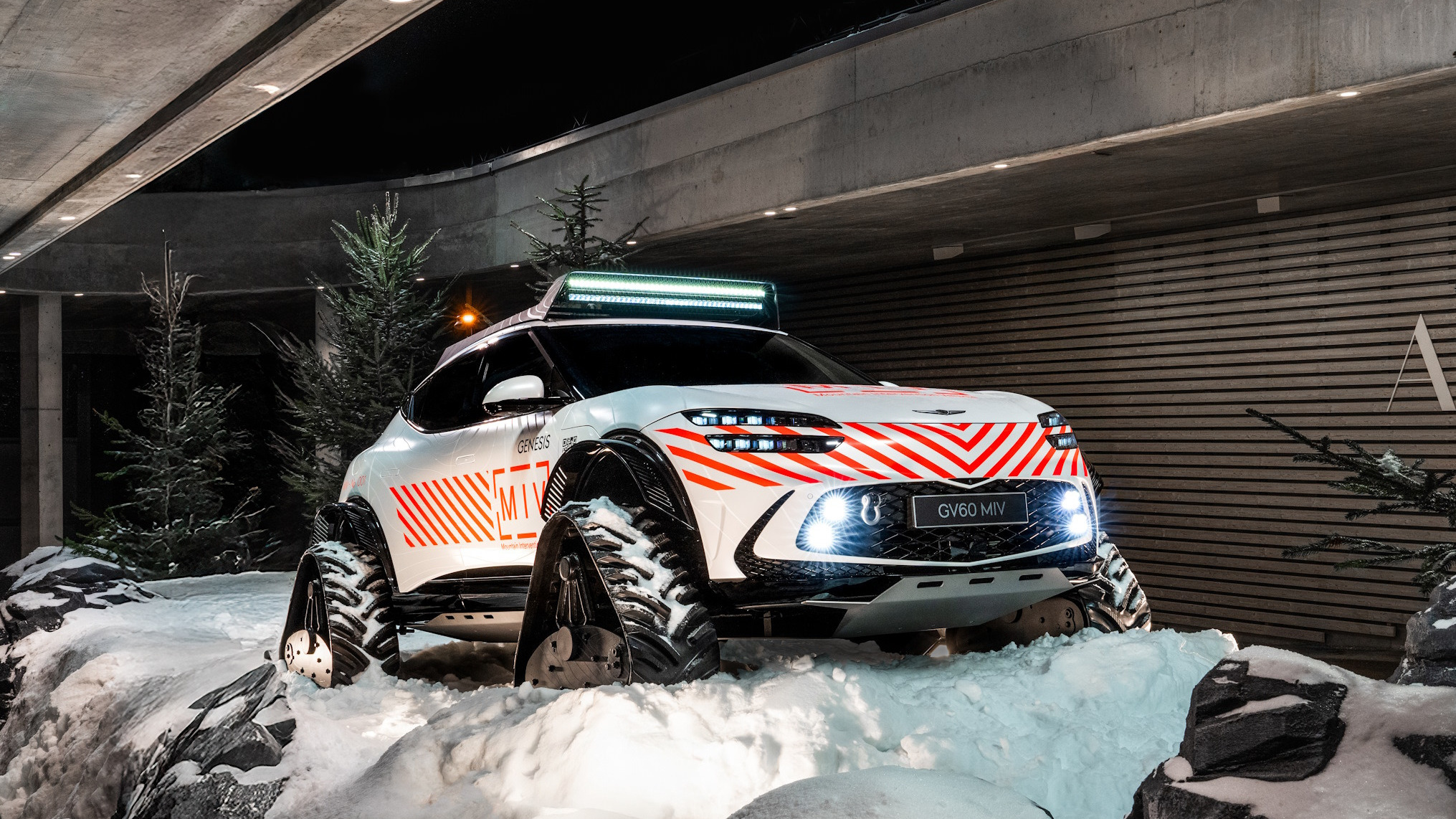 Davos 2025: Genesis goes all-out on outdoor machismo with this extreme sport support vehicle concept
Davos 2025: Genesis goes all-out on outdoor machismo with this extreme sport support vehicle conceptPresented to the World Economic Forum at Davos, the Mountain Intervention Vehicle Concept is a wild transformation of the Genesis GV60 into a tracked rescue vehicle
-
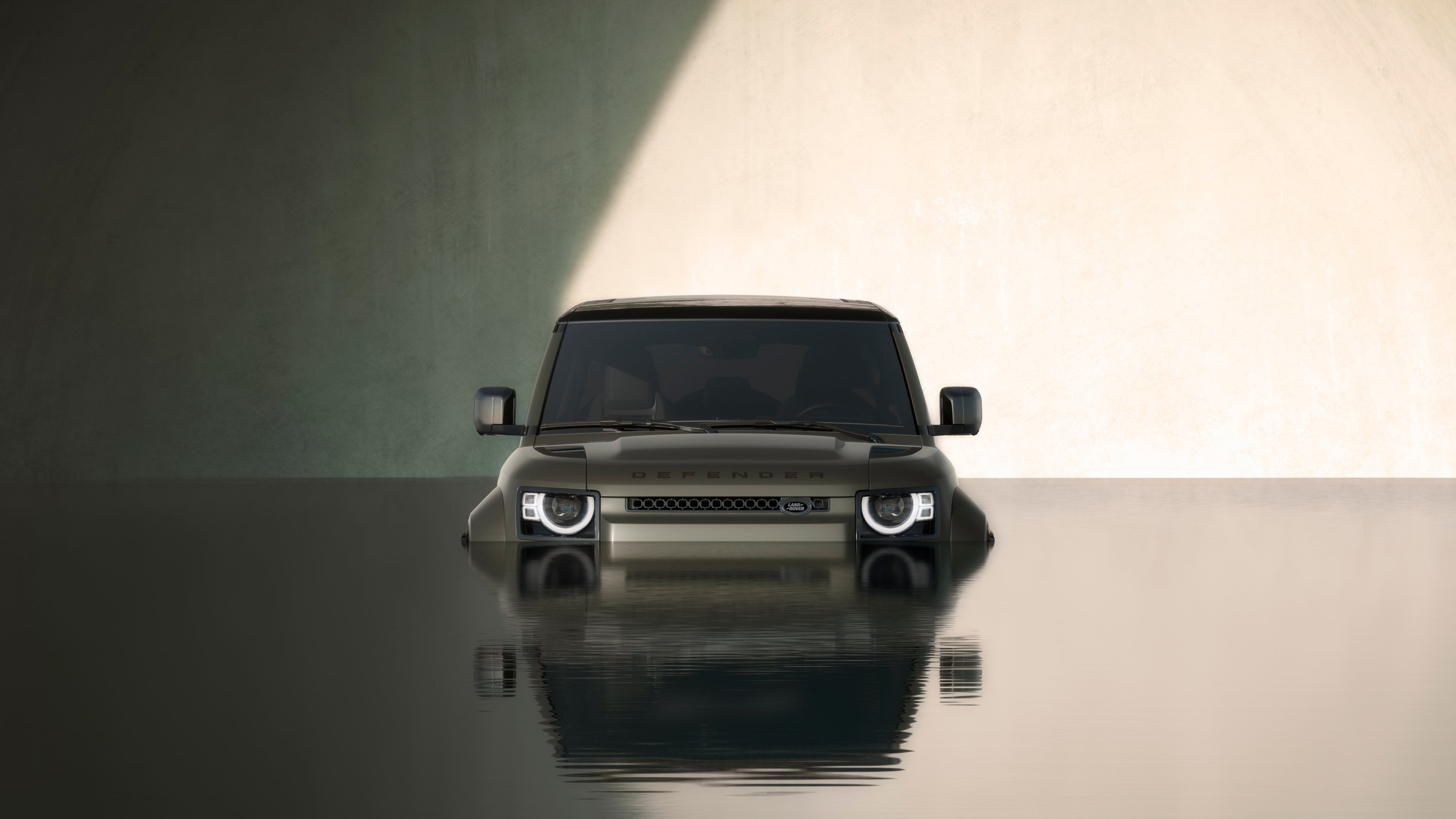 The 2024 Goodwood Festival of Speed hosted a wealth of auto innovation, from hypercars to hot hatches
The 2024 Goodwood Festival of Speed hosted a wealth of auto innovation, from hypercars to hot hatchesThe best new SUVs, EVs, hatchbacks and supercars to emerge from the 2024 Goodwood Festival of Speed
-
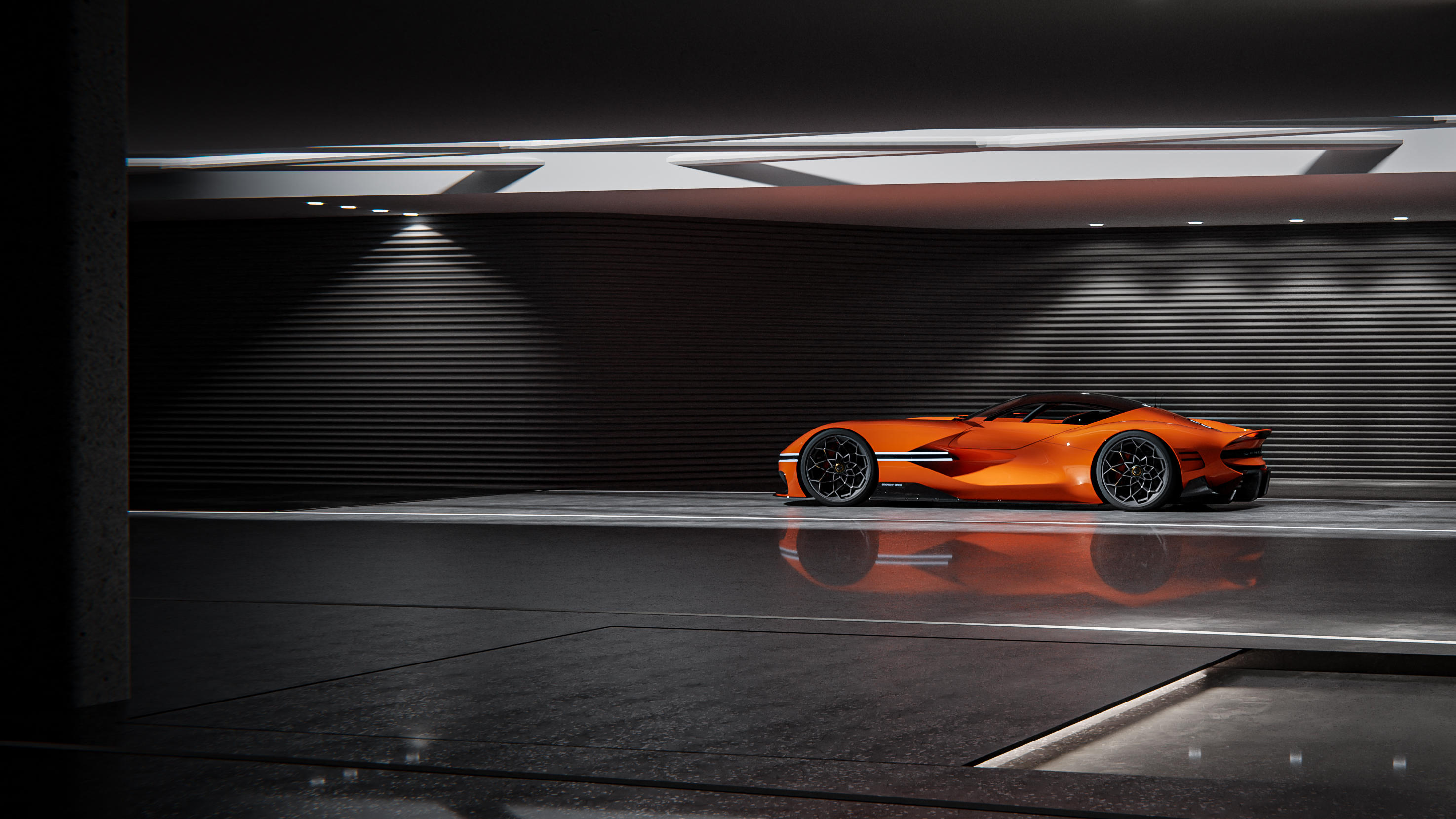 Genesis X Gran Berlinetta is Best Game Changer
Genesis X Gran Berlinetta is Best Game ChangerGenesis brings its A-game to the virtual realm with a concept car designed purely for use in Gran Turismo, picking up a Wallpaper* Design Award 2024 en route
-
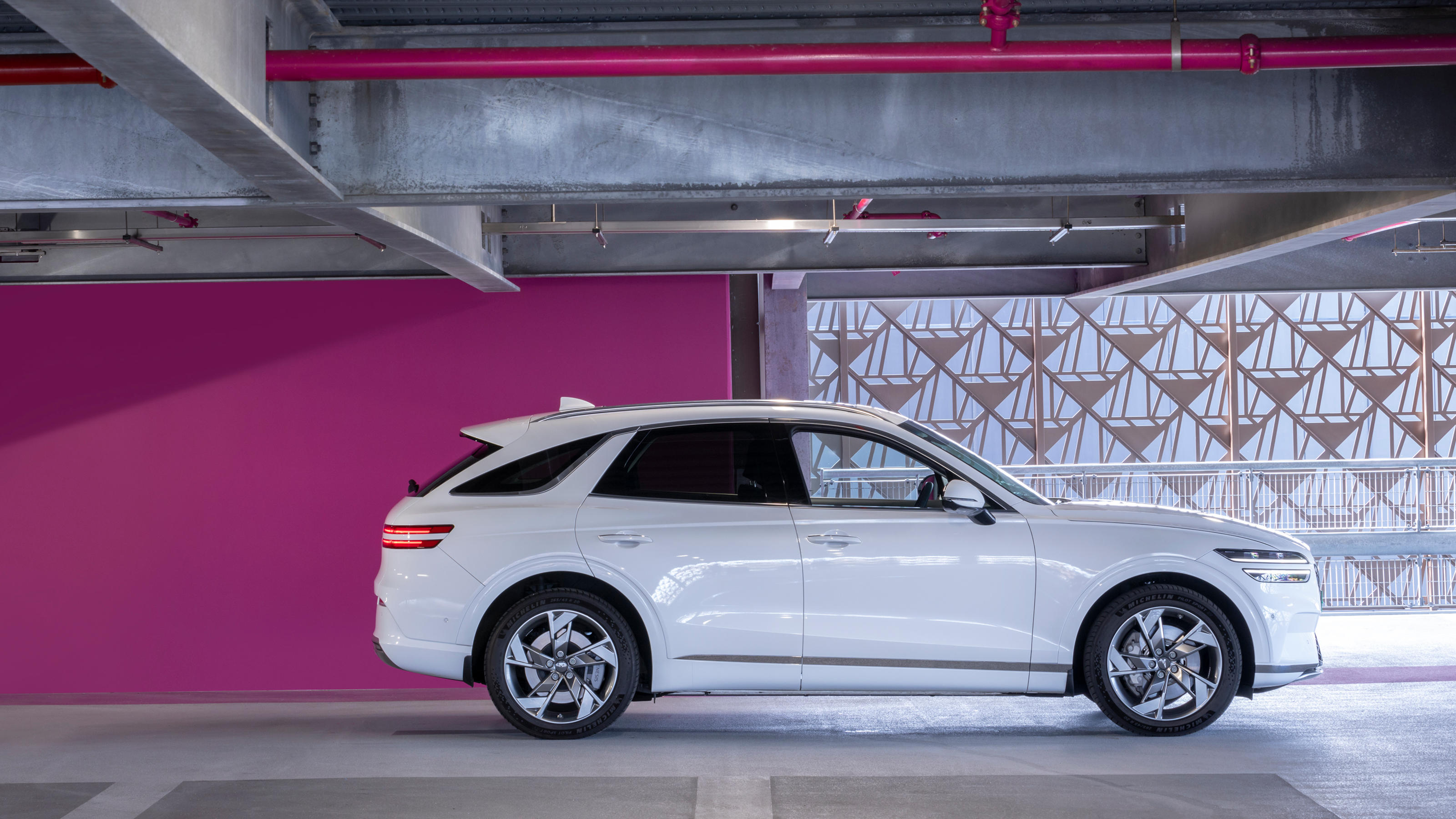 Genesis GV70 is an accomplished electric SUV that transcends its compromises
Genesis GV70 is an accomplished electric SUV that transcends its compromisesGenesis Electrified GV70, an all-electric SUV that rivals the class leaders, continues the brand’s quiet push into the established luxury arena
-
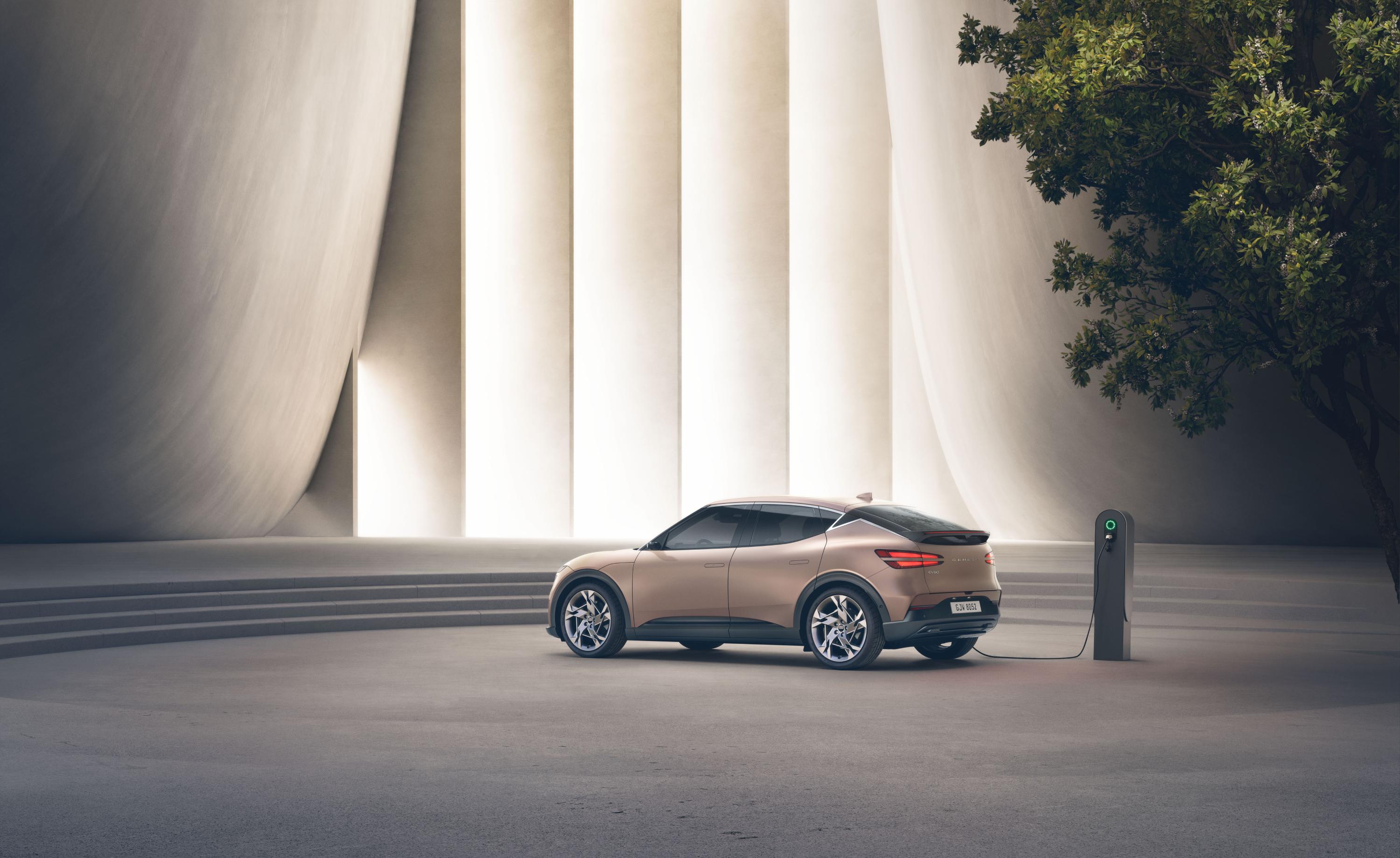 The Genesis GV60 marks a new era for electrified luxury
The Genesis GV60 marks a new era for electrified luxuryThe Genesis GV60 is one of the best EVs you can buy, a clean-sheet EV that puts the Korean luxury brand firmly on the map